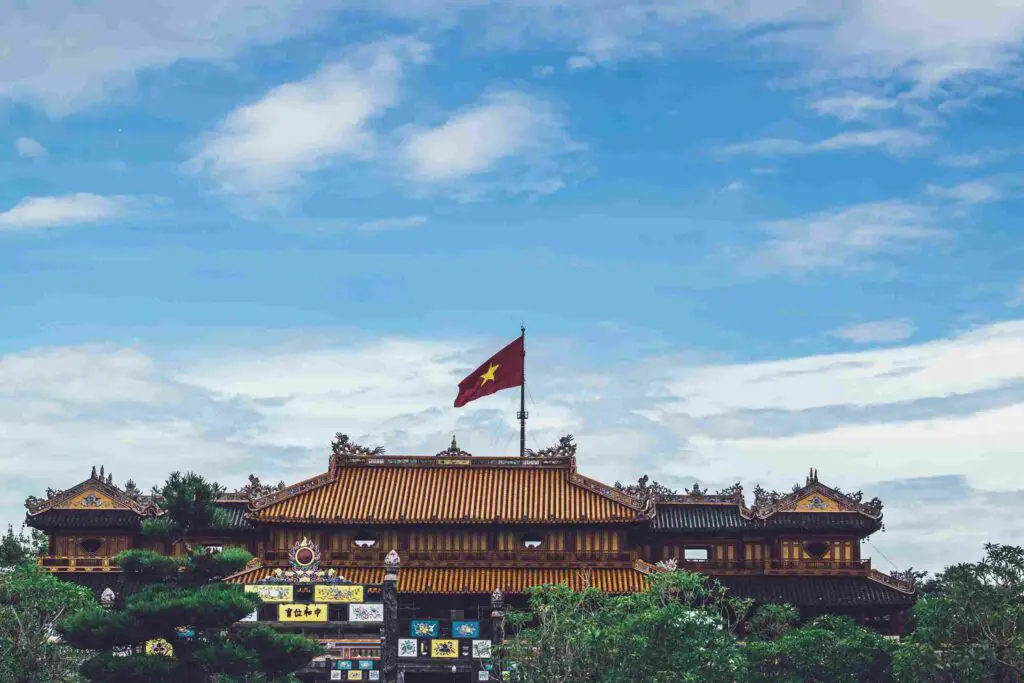
Where Vietnamese Emperors once roamed, the city of Hue will surely be a treat for all the history buffs out there!
Hue was once the imperial capital of Vietnam where royalty and nobility prospered. The city is located by the banks of the famous Perfume River and it still holds the remnants of the past monarchs that ruled here.
The city of Hue, although it’s no longer the capital, is still a beloved place by its people as well as tourists. Why not? When the city itself has gone through hundreds of battles and yet it still stands.
It was in Hue where the most brutal battle of the Vietnam War ensued, where many of its ancient remnants got destroyed, bombs pierced through the Imperial Complex, and monuments suffered.
Today, Hue is considered to be one of the most peaceful cities in Vietnam which is a great contrast to the events in its history. Tourists come here to learn about the ancient world of Vietnam as well as to have a taste of the delicious cuisine offered here.
In this article, we’ve ranked all the popular places you can visit in Hue, Vietnam!
1. Thien Mu Pagoda
The Thien Mu Pagoda is known as the most distinguishable symbol of Hue. It is also known as the Pagoda of the Celestial Lady after the legend of an old woman who appeared on the hill where the pagoda stands. The old woman told the local people that a Buddhist Pagoda will be built for the country’s prosperity.
The first pagoda was built in 1601 but the pagoda we know today was built in 1844 under the reign of then-Emperor Thieu Tri. The pagoda stands 21 meters high and boasts 7 storeys, each one dedicated to a Manushi-Buddha.
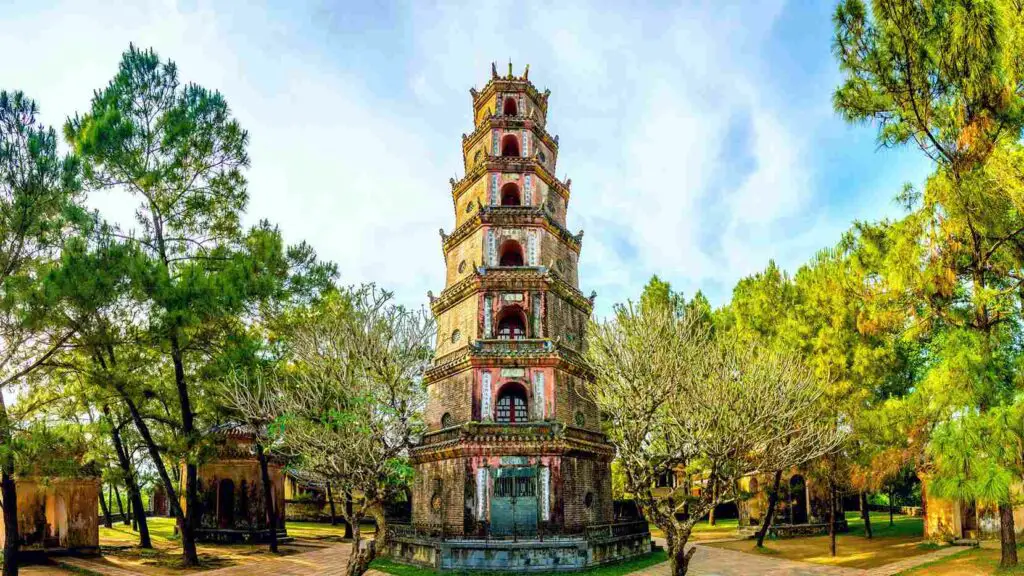
Today, Thien Mu Pagoda is one of the most popular sites in the city where people come to pray, relax, and simply have a peaceful day. The pagoda is surrounded by gardens and remnants of the protests against Catholicism.
Location: FG3V+7XC, Hương Hòa, Thành phố Huế, Hương Hòa Thành phố Huế Thừa Thiên Huế 532761, Vietnam
Entrance Fee: FREE
Opening Hours: 8 AM to 6 PM, daily.
2. The Imperial City of Hue
The Imperial Citadel of Hue is truly the place to visit if you want to see a glimpse of the ancient kingdom that once stood here. This amazing complex was where Vietnamese royalty used to live. The thick stone walls that line the complex protected the life inside paired with a moat.
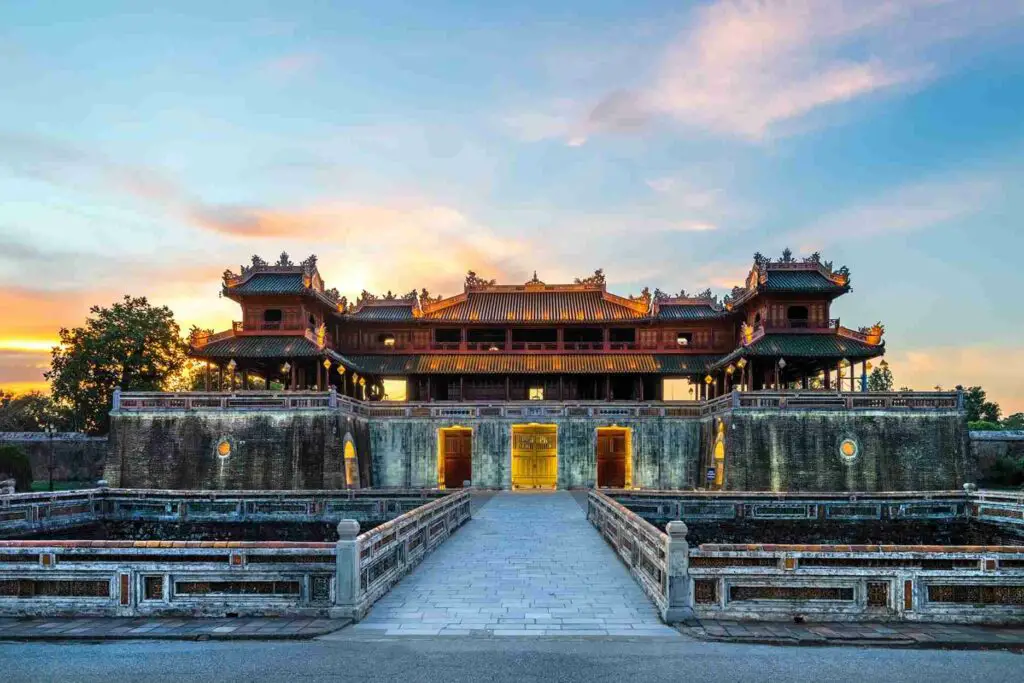
The Imperial City was constructed in 1804 under the reign of Emperor Gia Long, founder of the Nguyen Dynasty. It served as the official royal household until 1945. Inside the thick walls of the imperial city are temples, courts, gardens, and other buildings that were once used to serve the monarchy. The highlight of the citadel is the Meridian Gate which greets visitors who wish to go inside.
However, only 10 of the original 160 buildings of the Imperial City survived after the bombing during the Vietnam War and the destroyed buildings were left untouched not until the Communists came to power.
In 1993, the Imperial City of Hue was officially recognized as a UNESCO World Heritage Site.
You should definitely add this to your itinerary when you come to Vietnam. We believe that visiting the Imperial Palace will complete your visit!
Meridian Gate
The Meridian Gate served as the main gate to the Imperial Citadel of Hue. It was built in the year 1833 and was only used by the Kings and envoys. It stands 5 meters tall with the Ngu Phung pavilion resting on top, supported by a total of 100 pillars, glazed tiles in blue and gold, and embellished with murals of elephants, soldiers, and instruments.
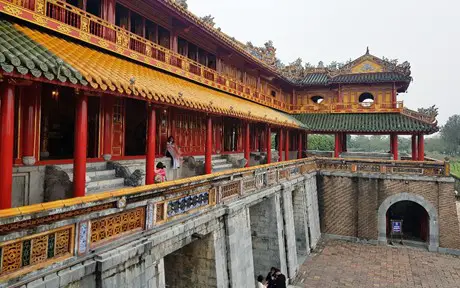
It is considered an architectural feat and is one of the structures that were not destroyed during the Vietnam War. The great Nguyen architectural style could still be seen on the walls of the Meridian Gate.
Purple Forbidden City
The first place you might think of when you hear the words ‘forbidden city’ is the famous imperial palace in Dongcheng, Beijing in China. But Vietnam used to have a forbidden city of its own.
The Purple Forbidden City in Hue was the official imperial Capital of Vietnam during the Nguyen Dynasty. This was where the royalties, the Emperors and their families, used to live and it was exclusive only to them, hence the name, “Purple Forbidden City”. In ancient Chinese beliefs, the color purple symbolizes honor and the highest status.
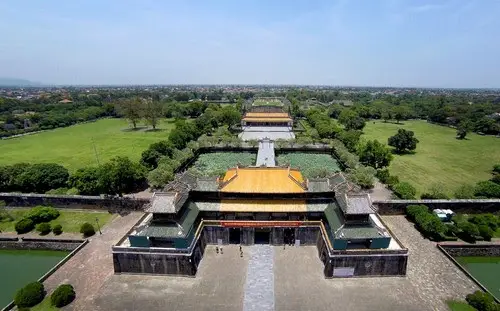
As you tour around the citadel, you might notice that almost nothing remains of the personal rooms used thousands of years ago. We can only imagine how the imperial house used to look like, how the eunuchs, the court ladies, and imperial maids used to roam around fulfilling their duties.
Location: Hue Vietnam
Entrance Fee: $6.50 or VND150,000 for adults, $1.30 or VND30,000 for children.
Opening Hours: 7 AM to 6 PM, daily.
3. Thanh Toan Bridge
The next site on our list seems like nothing to other people but Thanh Toan Bridge is actually quite popular among the Vietnamese because of the story behind it.
Thanh Toan Bridge is an 18th-century footbridge with roof tiles. The bridge connects a small village to the mainland. The bridge construction of the bridge was all thanks to Mrs. Tran Thi Dao who commissioned the construction in 1776.
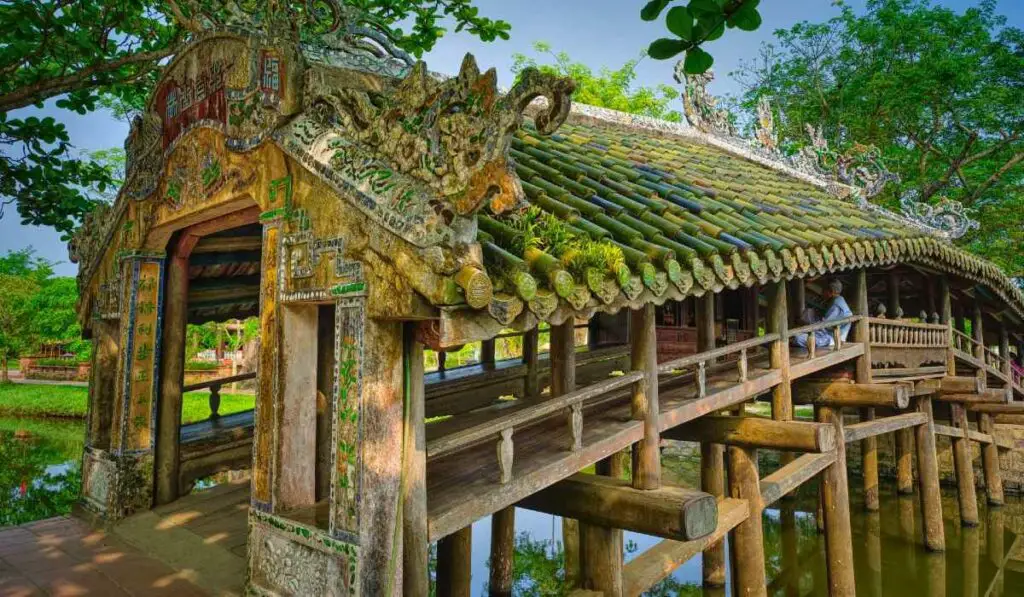
She wished to make travel and communication between the two lands easier. Unfortunately, until her demise, she bore no children. Le Hien Tong King, the 6th emperor of Vietnam’s Le dynasty ordered an altar to be placed at the foot of the bridge to commemorate her contribution.
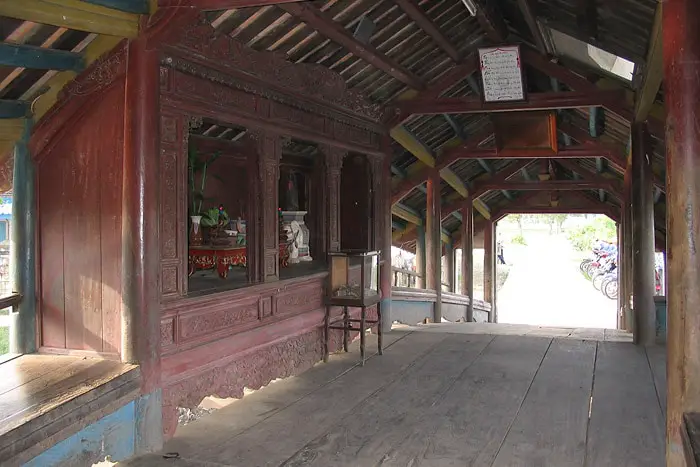
To this day, people who pass by the altar still pray for her, and the story of how she connected two separate lands lives on.
Now, this bridge might not be much but perhaps the story is enough to persuade you to visit the bridge and pray at the altar of Mrs. Tran Thi Dao.
Location: Thuy Thanh Commune, Huong Thuy Town, Thua Thien – Hue Vietnam
Entrance Fee: $1.30 or VND30,000
Opening Hours: Always open.
4. Dong Ba Market
Built in 1885, Cho Dong Ba is the oldest and the largest market in the city. And if you’ve been reading other articles about Vietnam, you probably already understand that public markets are a huge part of Vietnamese culture.
Life in Dong Ba Market is full of energy and if you’re around town, this is the perfect place to buy all the supplies you need, may it be for your travels in Hue or souvenirs to bring back to your families and friends.
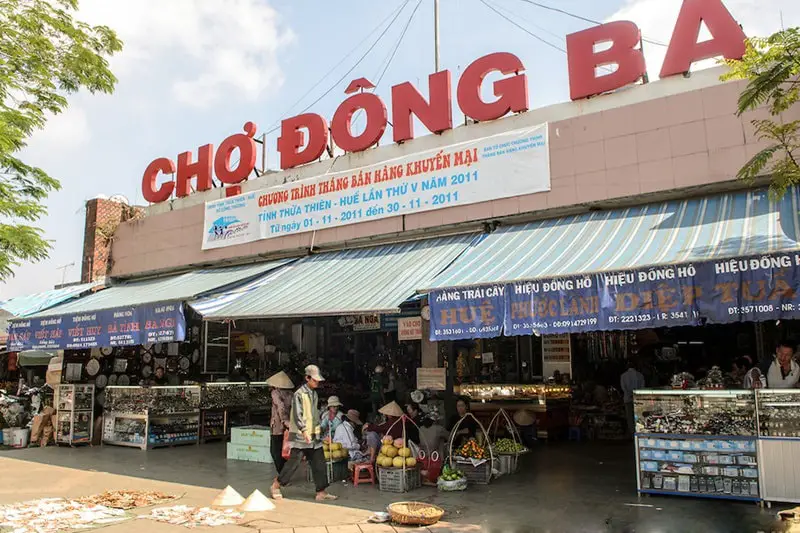
The 16,000 square meter space offers everything from fresh produce, meat, delicious food, traditional clothes, jewelry, shoes, and pretty much everything. The place can be chaotic so you might need to muster up courage when you come to visit Dong Ba.
The market opens very early at 3 AM to accommodate sellers but going there in the afternoon is nothing too different since the chaos is always on no matter what time it is!
Location: Phú Hoà, Thành phố Huế, Thua Thien Hue Vietnam
Entrance Fee: FREE
Opening Hours: 5 AM to 10 PM.
5. Bach Ma National Park
Bach Ma National Park might just be the most picturesque national park in Vietnam. It is located within the Annamite Mountains in the wettest region in Vietnam.
Forest trees and glittering pools of water surround the Bach Ma National Park. The cool climate here caused the French to take advantage, using it as a hill station. The National Park is elevated above 1,450 meters, that’s why the cool temperature is not a surprise.
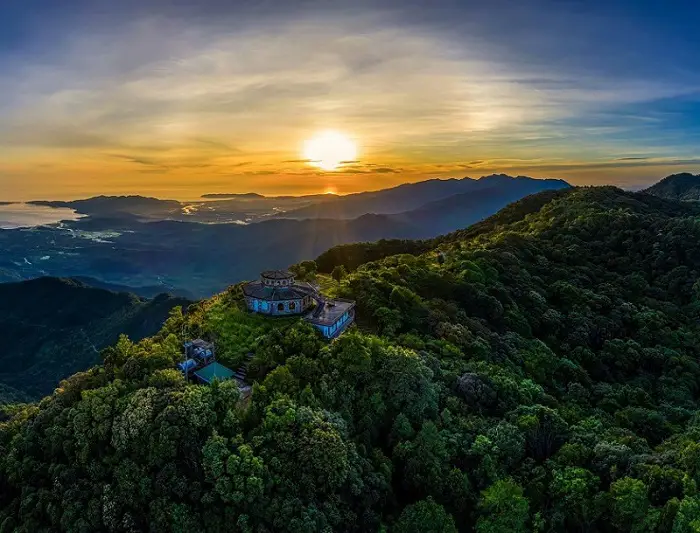
The Bach Ma National Park was named after the Bach Ma Mountain which is home to a variety of plants and animals.
We highly recommend you to visit Bach Ma National Park since it has some of the most beautiful views in Hue. This is also a great place to do some hiking or swimming among the towering waterfalls!
Location: 6V8V+GFW, Lộc Trì, Phú Lộc, Thừa Thiên Hue Vietnam
Entrance Fee: $2 or VND40,000 per person
Opening Hours: Always Open.
6. Tomb of Tu Duc
The Tomb of Tu Duc has had a lot of controversies as it was being built. From 1864 to 1867, the tomb was ordered and designed by Emperor Tu Duc himself.
We researched more on Tu Duc’s reputation and we simply can’t pinpoint whether he was a great emperor or if he was a narcissistic one. However, we do know that he ordered everyone who knew his exact burial grounds to be executed and beheaded. People were forced to work on his tomb and he used so much money that it sparked a revolt against the emperor. The revolt was unsuccessful.
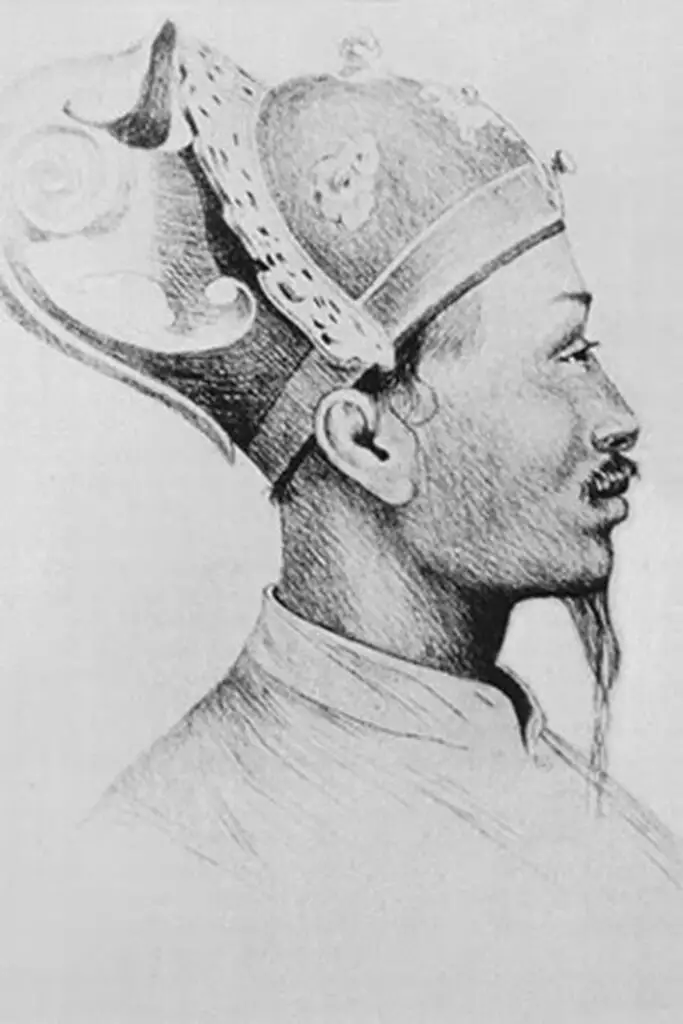
Despite the grim story behind the tomb, it remains to be one of the most marvelous tombs ever built in the country. It is a wonder to look at and even though there’s not much to do after you’ve seen it, the courtyard, statues, and temples that surround it are definitely worth checking.
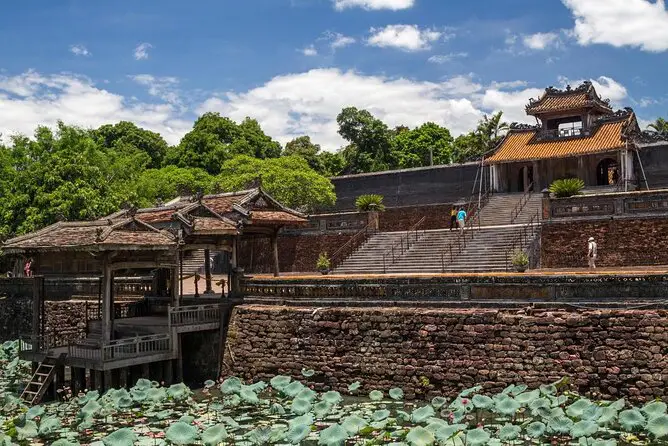
The story of those who got beheaded makes us wonder if they roam the tomb in search of the emperor!
Location:CHM8+6H3, Cầu Đông Ba, thôn Thượng, Thành phố Huế, Thừa Thiên Hue Vietnam
Entrance Fee: $6.50 or VND150,000 for adults and $2 or VND40,000 for children
Opening Hours: 7 AM to 5:30 PM, daily.
7. Khai Dinh Tomb
Another marvelous tomb that you can visit in Hue Vietnam is the tomb of Emperor Khai Dinh.
This one holds its fair share of controversy too. Well, Emperor Khai Dinh wasn’t really a favored Emperor by his subordinates. It was because he sided with the French colonizers more than his people. He was the one who ordered to change the traditional alphabet into a Romanized Vietnamese alphabet back in 1918. This caused people to forget their own local language with nobody understanding it anymore today.
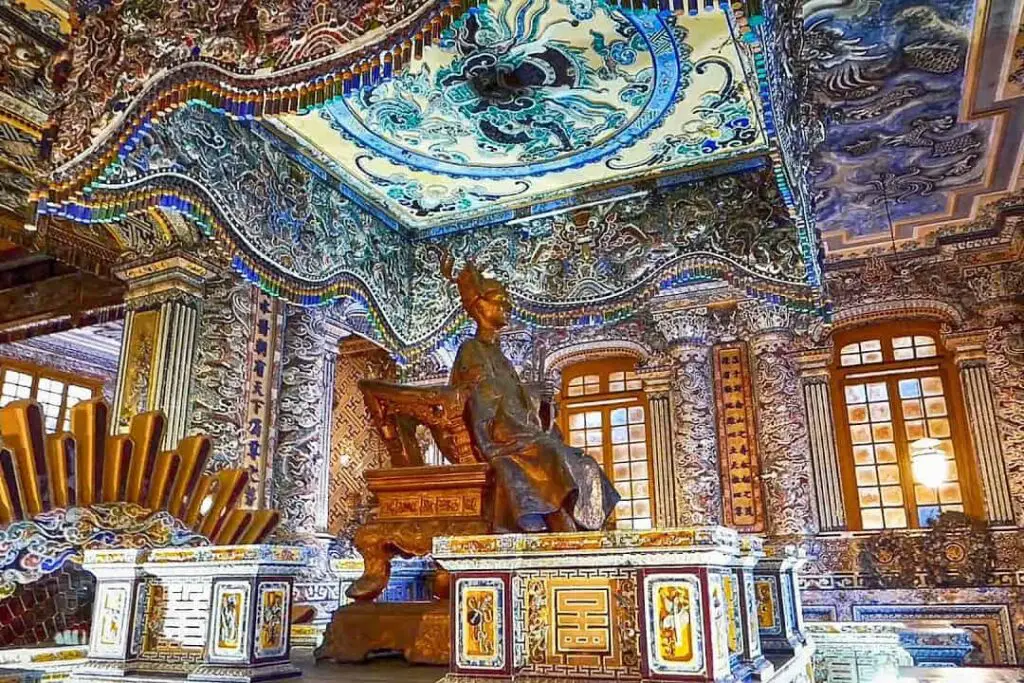
The tomb of Khai Dinh was the last tomb to be built in Vietnam. Despite its ‘small’ size, it is considered to be the most expensive and extravagant of all the tombs. It was designed after Western and Eastern architectural styles, perfectly incorporated with each other.
You’ll find dragons watching over by the ceilings, porcelains lined up, and ornaments bedazzling the interiors. The tomb of Khai Dinh is truly a sight to witness and wonder!
Location: xã Thủy Bằng huyện Hương Thuỷ, Huế, Thừa Thiên Huế 530000, Vietnam
Entrance Fee: $6.50 or VND150,000 for adults and $2 or VND40,000 for children
Opening Hours: 7 AM to 5:30 PM, daily.
8. Perfume River
No, Chanel No. 5 does not flow in the Perfume River. It’s not actually made out of perfume!
What makes Hue more iconic is the beautiful Perfume River that flows through the city. It’s no wonder that the Imperial Citadel was built by the river as this river will surely leave all emperors in awe.
This 50-mile-long river that travels through Vietnam was named Perfume River because of the fragrant aroma that exudes out of the fallen flowers that travel through during autumn.
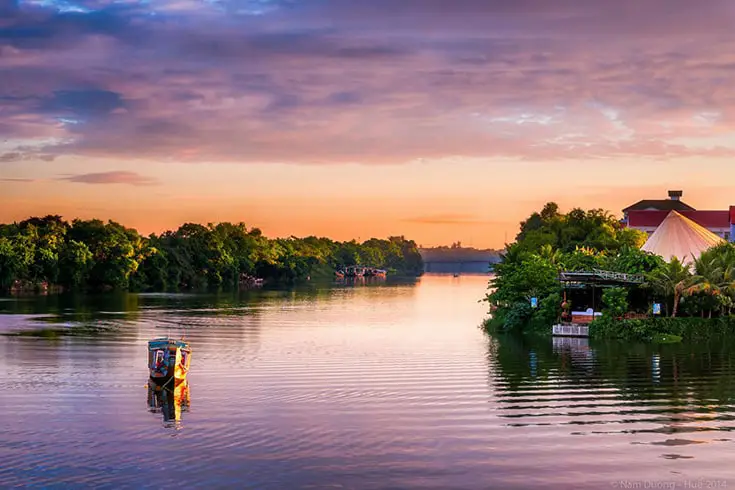
The river itself is calm and peaceful and really a contrast to the chaos beyond its premise. Walking along the riverside will make you feel as if you’ve been brought back in time, living in ancient times.
And if you want to get close and personal with the Perfume River, you can rent a paddle boat and explore the riverbank. Having a dinner date with somebody you love or by yourself is also a romantic way to spend time in Perfume River!
Location: Hue, Vietnam
River Tours: Small boats can be rented for as low as $3 but a full sunset cruise can cost about $20 or VND470,000.
Opening Hours: Always Open.
9. Minh Mang Tomb
Last on our list is the tomb of Emperor Minh Mang. Unlike Khai Dinh, Emperor Minh Mang was a great defender of his people. He opposed the french colonial rule and ordered the execution of Catholic Priest Reverend François Gagelin and 7 others as well as other native converts.
However, his actions would backfire on him as this gave the French an excuse to order an invasion of Vietnam in 1858. Minh Mang was the second emperor of Hue Vietnam.
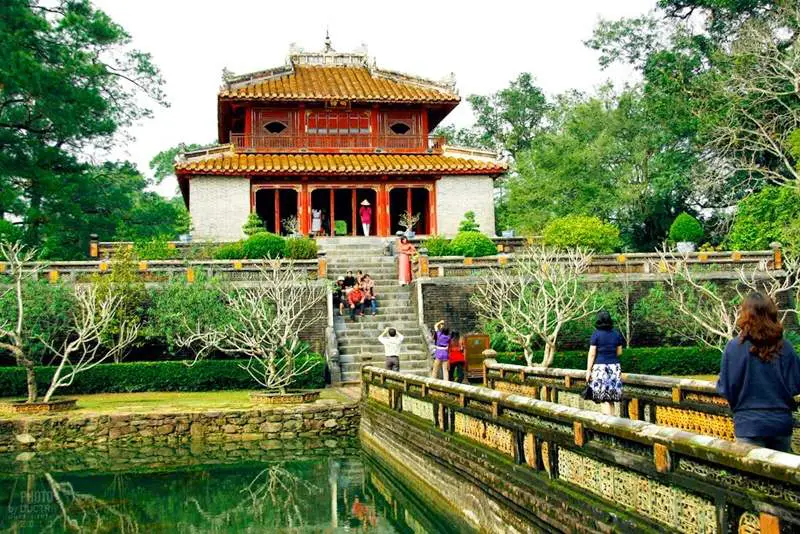
It’s no surprise how this mausoleum is considered to be one of the most popular among the locals and tourists. The Mausoleum of Emperor Minh Mang is the largest of all tombs in Vietnam and was only completed two years after the start of its construction in 1840. Unfortunately, the emperor was unable to witness the marvel of his own tomb because he died before it was completed.
The burial site consists of more than 40 structures which include pavilions, temples, pagodas, and palaces. So, expect to spend a lot of time here as there is so much to see in the complex!
Location: 9HQC+CW2, Unnamed Road, Hương Trà, Thừa Thiên Huế, Vietnam
Entrance Fee: $4 or VND100,000 for adults and $0.85 or VND20,000 for children.
Opening Hours: 7:30 AM to 5 PM, daily.
What is the best way to explore the City of Hue?
Hue offers a lot of places for you to visit and explore. The best way to do so if you’re a first-time traveler is to book tour packages that offer tours all around the city. There are different kinds of tours you can take, such as Full-Day tours, Night Cycling tours, or tours to different villages.
The cost of tours in Hue is usually around $30 to $100 or more. Group tours generally cost less and private tours cost more, unsurprisingly. Checking out the booking websites we’ve hand-picked for you will ensure that you get the best deals on your trip to Hue.
If you want to quickly check out some flights, attractions, and other travel information, we have a useful page for you too!
Hue Places of Attraction Map
Is Hue worth visiting?
Definitely, yes! Among all the places in Vietnam, Hue is the most interesting of all of them in our opinion. Not because of its progressive state or because it offers the most heart-stopping experiences but because it’s the portal that leads us to see how the ancient land of Vietnam used to be.
After all, Vietnam will not be what it is today if it isn’t because of the people who used to govern and protect those who lived for the country. The beginning of the story tells how its path ends and that’s what makes Hue timeless.
What are you looking forward to on your visit to Vietnam?




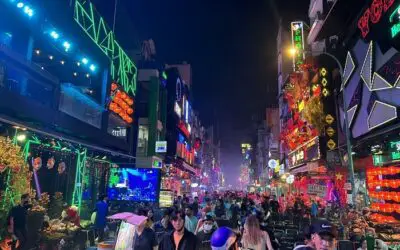
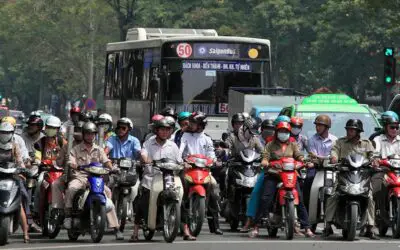
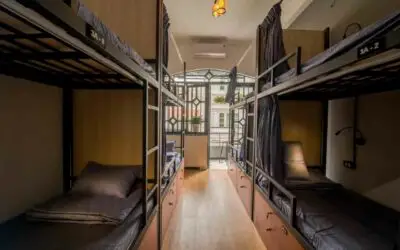
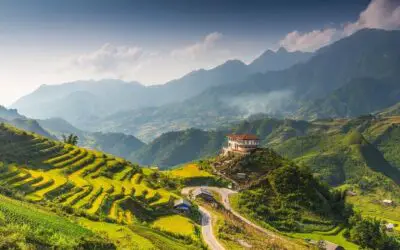
0 Comments